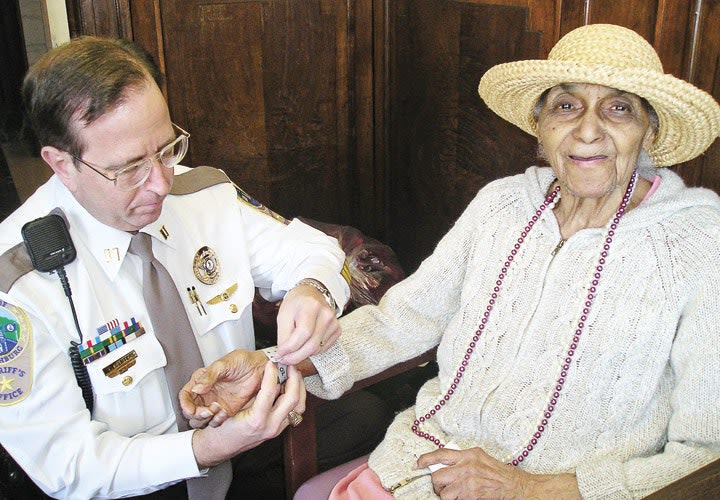At-risk individuals enrolled in Project Lifesaver wear a small personal transmitter around the wrist or ankle that emits an individualized tracking signal. If an enrolled client goes missing, the caregiver notifies the local Project Lifesaver-trained emergency response team. Responders tune into the individualized frequency of the client's transmitter, listening for a signal that can help them locate the client.
But Project Lifesaver is much than just a tracking technology. We're a 501 (C) (3) community-based, public safety, non-profit organization that provides law enforcement, fire and rescue, other first responders, and caregivers with technology and training to protect, and when necessary, quickly locate individuals with cognitive disorders who are prone to wandering. Project Lifesaver is also a subject matter expert and advisor on the wandering issue for such organizations as: Leaders Engaged on Alzheimer's disease (LEAD), the National Center for Missing & Exploited Children, the International Association of Chiefs of Police (IACP), the Alzheimer's Foundation, the National Alzheimer's Project Act (NAPA), the National Council of Certified Dementia Practitioners, and the International Council of Certified Dementia Practitioners. The Project Lifesaver training program is recognized and approved by the Virginia Department of Criminal Justice Services.
Project Lifesaver is the most widely used and effective program in the nation that is specifically designed to protect the "at risk" special needs populations in our communities. Project Lifesaver has trained thousands of public safety agencies, not only in search, rescue, and the use of our electronic locating equipment, but also in how to communicate with a person who has Alzheimer's disease, autism, or a related cognitive disorder.
Certified Project Lifesaver first responders are given the necessary tools to respond to wandering episodes involving children and adults with cognitive conditions. The program trains first responders to understand the behaviors of individuals with special needs that tend to wander so they are able to interact with these people in an effective and successful manner. Project Lifesaver training also includes instruction for families and caregivers on the maintenance of the locating technology and the reporting protocol for when their loved ones go missing.
Along with the our traditional Project Lifesaver training program, which provides a Basic Operator Course, Instructor Course, Airborne Tracking instruction, and an overview of Alzheimer's, autism, and how to approach safely and comfortably bring those individuals home, we have begun to offer more comprehensive and focused training courses for first responders on the cognitive conditions and behavior patterns of the at-risk people who wander. This additional training is offered through our strategic partner Biography Based Care.












